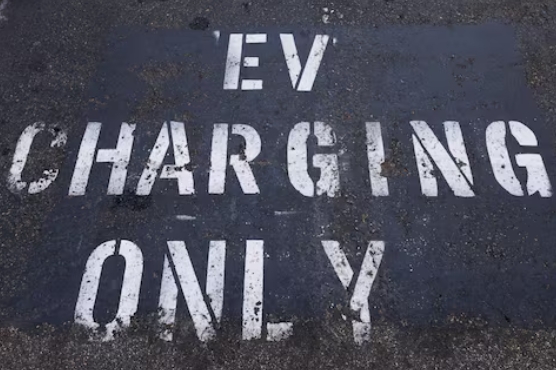
A parking space is marked specifically for an electric vehicle to charge charger in a shopping center parking lot in Oceanside, California, U.S.,October 19, 2023.
The House of Representatives’ version of the bill takes a different approach, allowing the $7,500 new EV tax credit to continue through 2025 and extending it to 2026 for automakers yet to sell 200,000 EVs. The Senate’s proposal accelerates the timeline for ending these incentives, impacting consumers and manufacturers planning EV purchases or production.
The Senate bill includes a measure to eliminate penalties for automakers failing to meet Corporate Average Fuel Economy standards, potentially easing production of gas-powered vehicles. Additionally, it introduces a tax exemption for interest on auto loans for new U.S.-made vehicles through 2028, though this benefit phases out for individuals earning over $100,000 annually.
A previous proposal to require the U.S. Postal Service to scrap its 7,200 electric vehicles, including Ford e-Transit and Oshkosh Defense’s Next Generation Delivery Vehicles, was removed from the bill after a Senate parliamentarian ruling. The Postal Service had estimated that eliminating these vehicles and related charging infrastructure would cost $1.5 billion.
Senate Republicans stated: “This bill adjusts incentives to balance consumer choice and industry needs.” The changes aim to reshape the automotive market by altering financial support for EVs while introducing benefits for traditional vehicle production.
The bill’s release follows recent legislative actions, including a resolution signed by President Donald Trump in June 2025, approved by Congress, which overturned California’s plan to phase out gasoline-only vehicle sales by 2035. This plan had been adopted by 11 other states, representing a significant portion of the U.S. auto market.
These proposed changes reflect ongoing discussions about balancing economic priorities and consumer access to vehicles. The Senate’s bill, if passed, could influence EV adoption rates and automaker strategies in the U.S., while the tax exemptions for U.S.-made vehicles aim to support domestic manufacturing. The final outcome will depend on negotiations between the Senate and House as they reconcile their differing approaches.